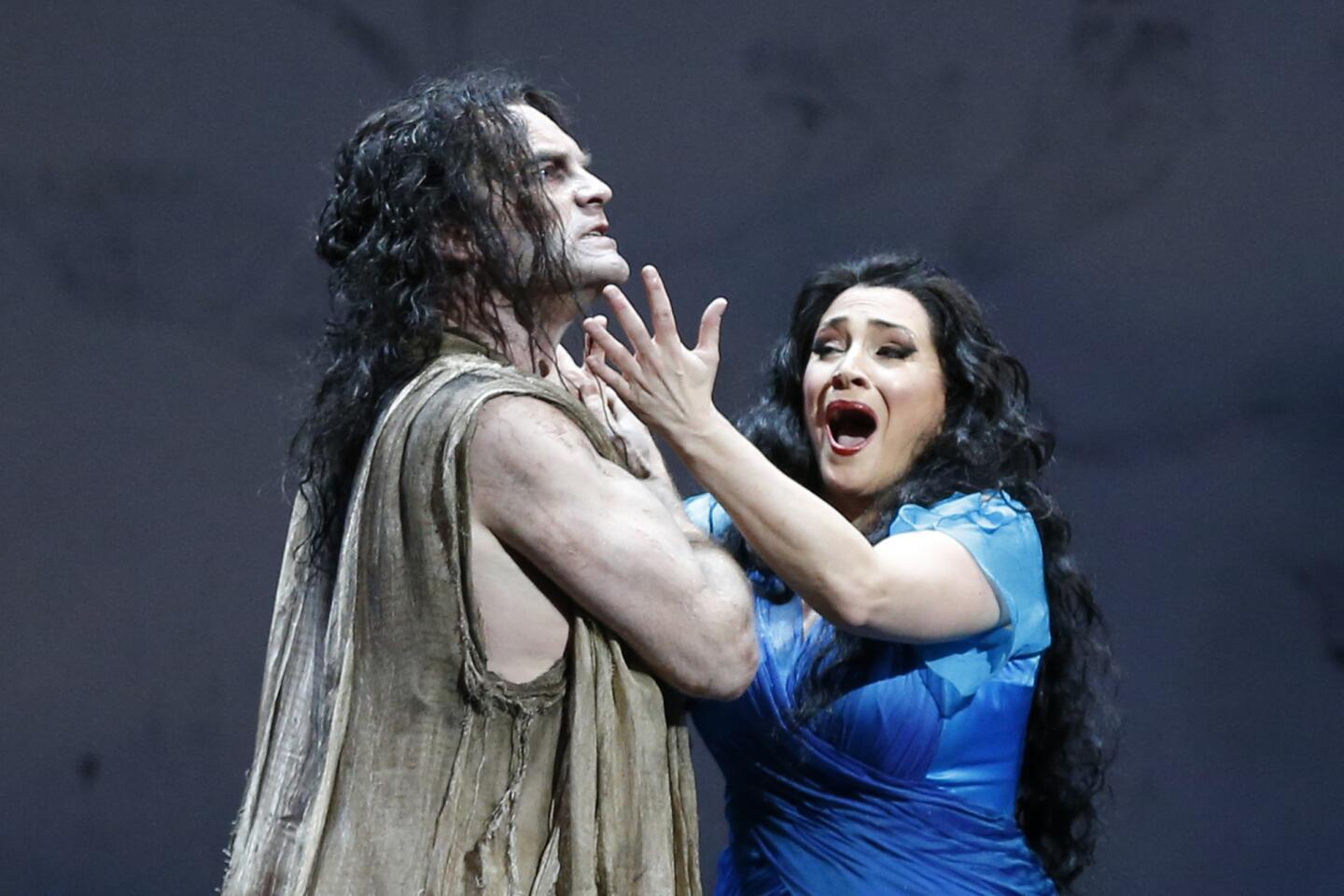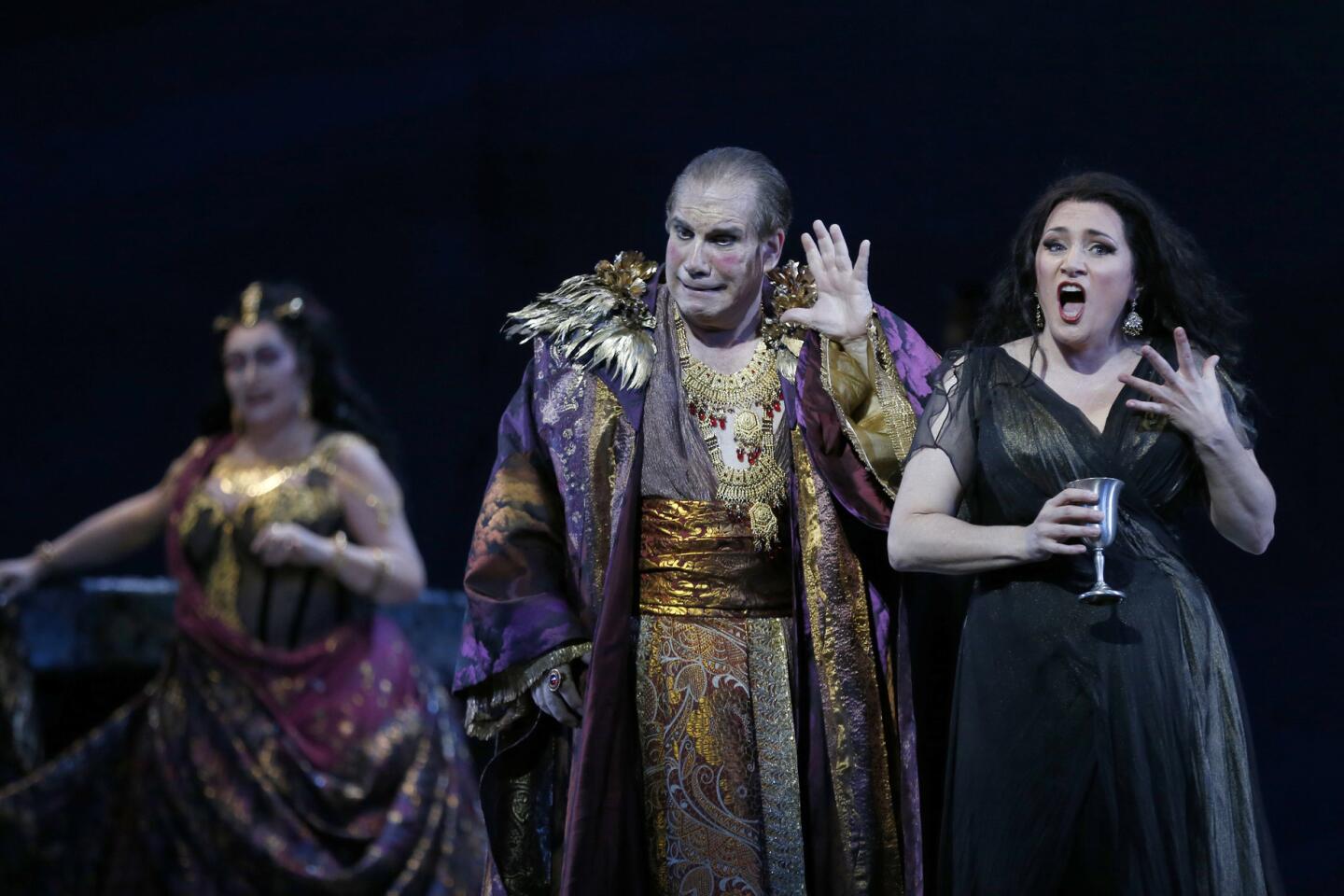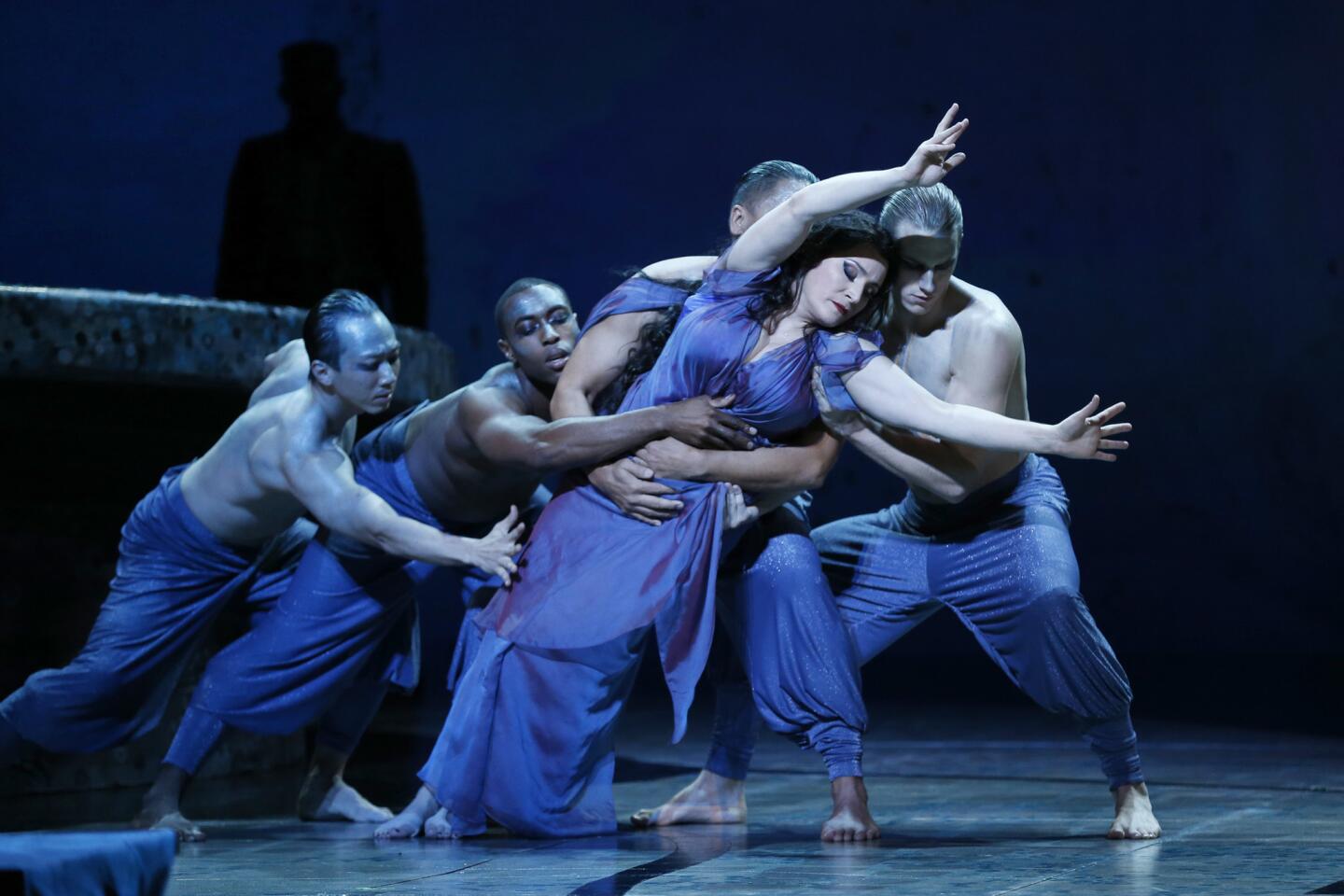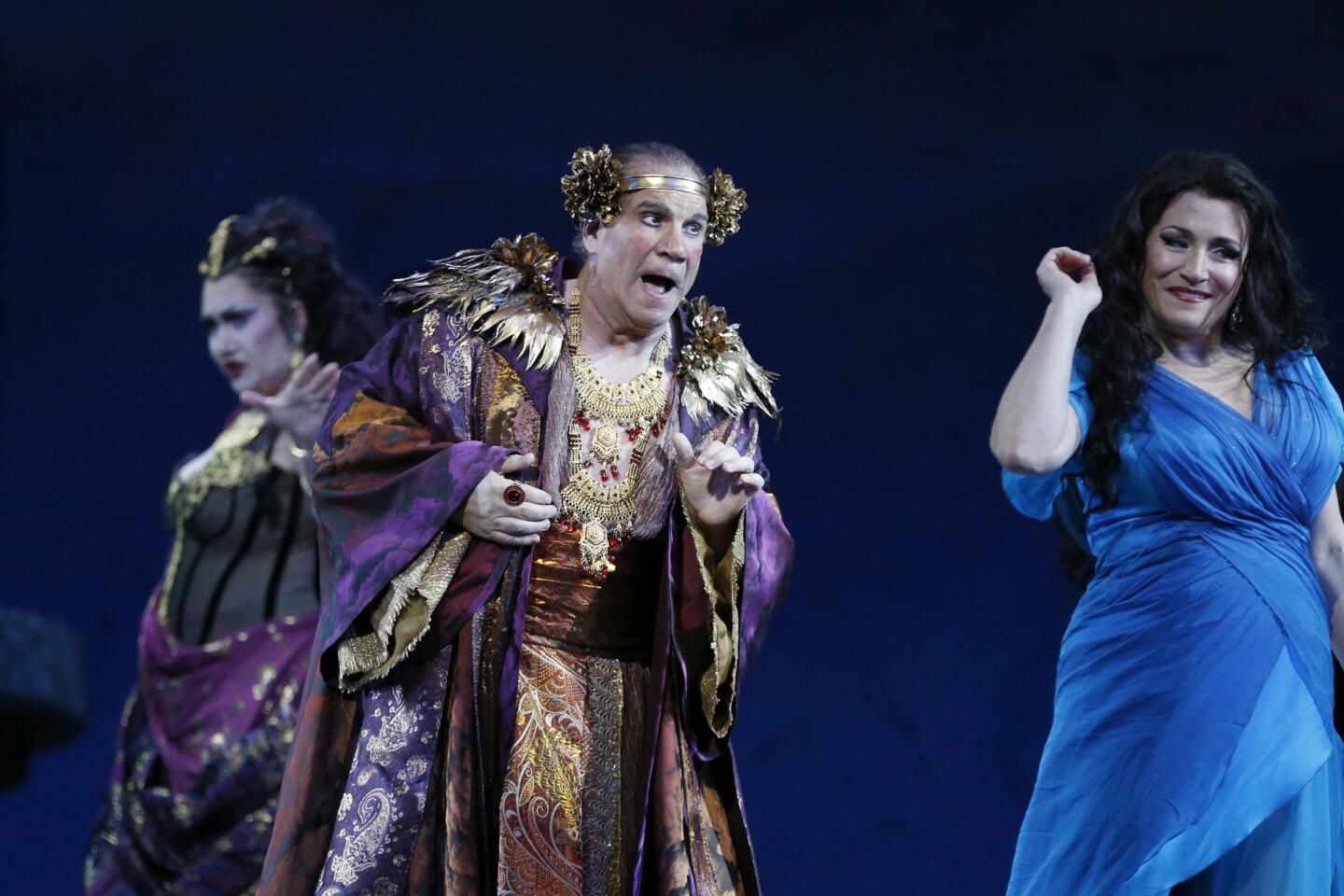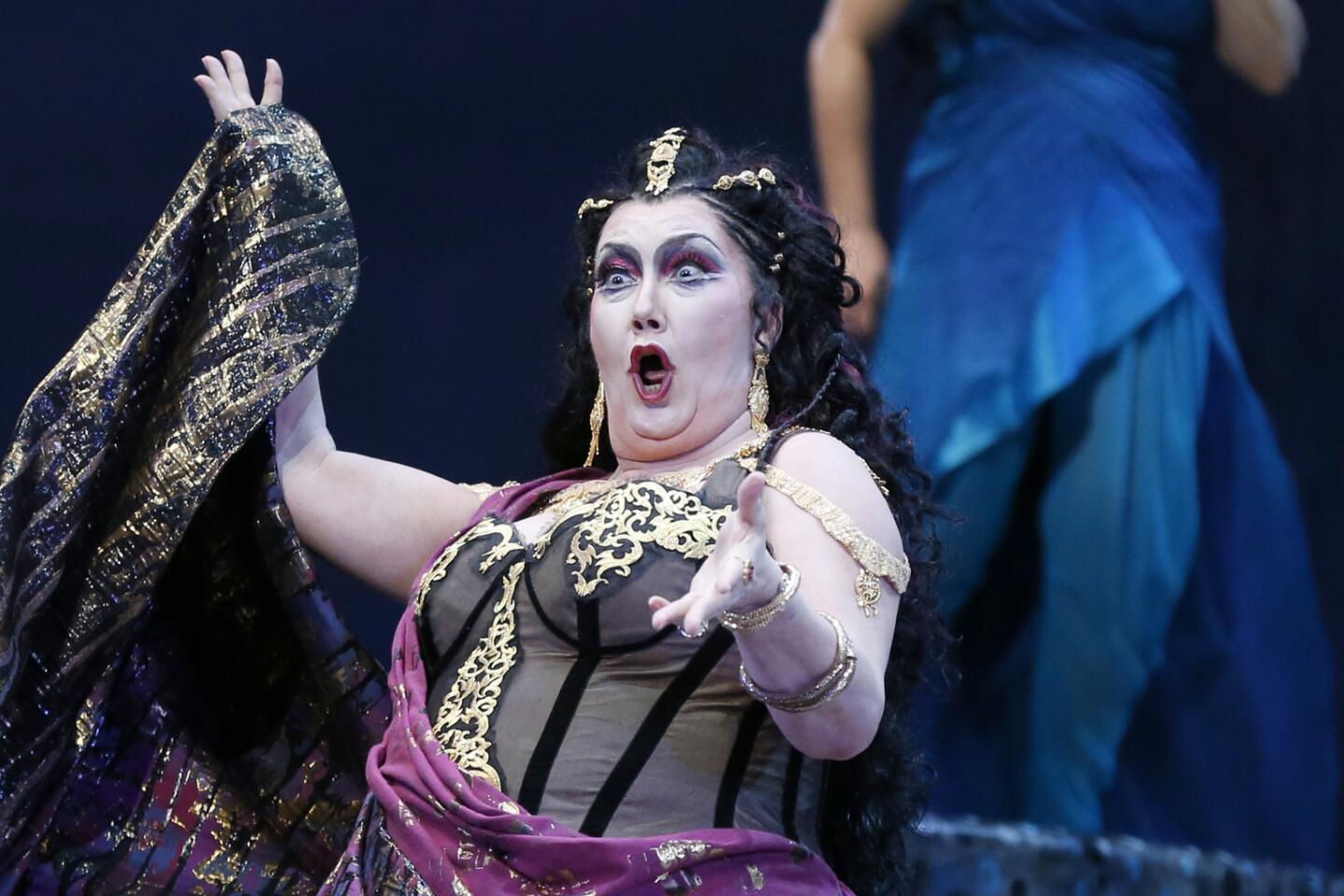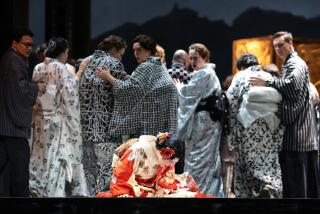Review: L.A. Opera’s 30-year-old ‘Salome’ is back, and not a kid anymore
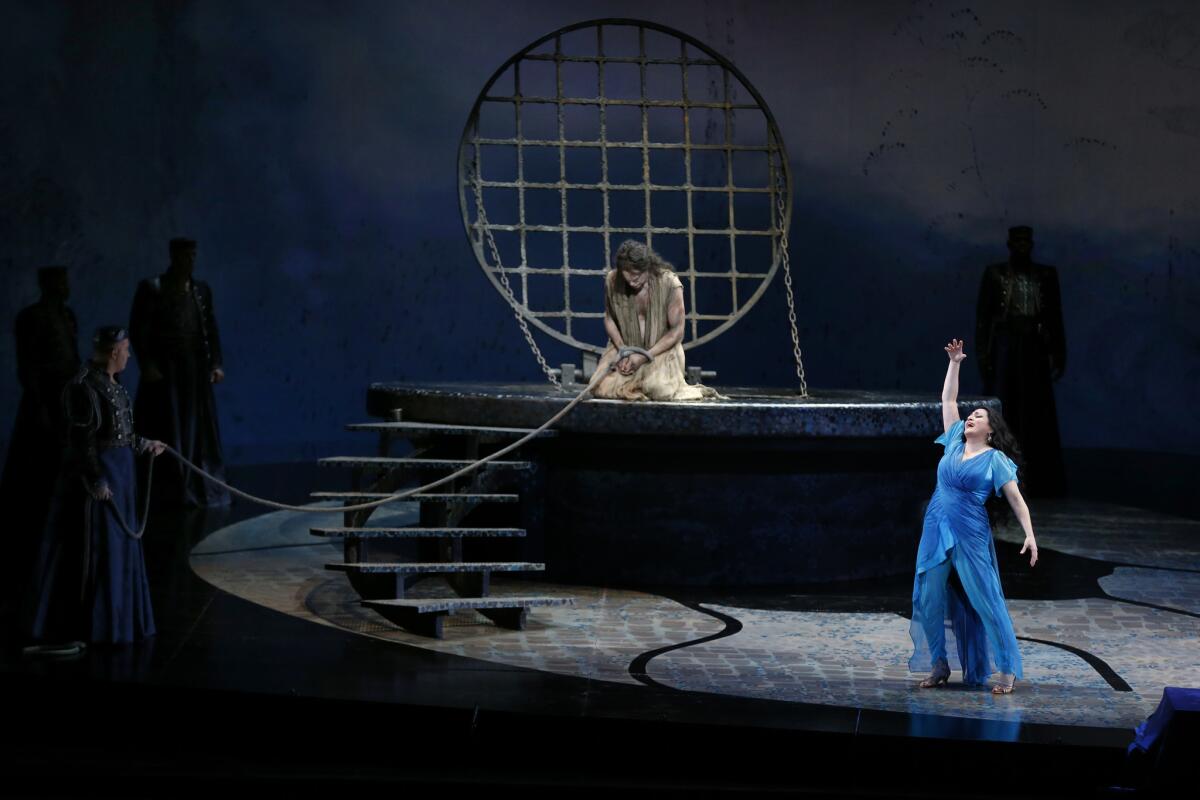
- Share via
Thirty is not old in opera. An art form that’s been around for more than three centuries, it is also an art form that takes the long view. Classic 1950s and 1960s opera recordings of standard repertory survive, thrillingly remastered to the latest hi-res standards. Operas written 30, 40, even 50 years ago are perceived as modern.
What does age as quickly as fashion, however, is staging. There are notable exceptions, of course, but in the vast majority of cases, the few remaining productions three or more decades old now look glaringly dated, if not downright camp.
Thirty years ago, Los Angeles Opera, then called Music Center Opera, was a new company; consequently, all its productions were new too. One from that first season, mounted in fall 1986, helped put the fledgling company on the map. Strauss’ “Salome,” staged by British director Peter Hall, starred a nubile, mysterious American mezzo-soprano, Maria Ewing, who brought unfettered sexuality to the title role and stripped naked. Overnight, L.A. was au courant opera central.
On Saturday night at the Dorothy Chandler Pavilion, L.A. Opera revisited that ancient, if once steamy, “Salome,” now as a vehicle for soprano Patricia Racette, a very different, 21st century singer.
Could it be that, moldering away in some warehouse, John Bury’s “Salome” set survived the fad for the Japanese art of decluttering, because Strauss’ opera is itself so shockingly untidy in its perversion? An oversexed teenager in biblical times, failing to seduce the prophet John the Baptist, disrobes for her lecherous stepfather, Herod. In return, she demands that John be beheaded so that she, ever in need of attention, can kiss his bloody lips. Herod’s lust turns to repulsion, and he orders her killed. No goodness comes from narcissism or sexual abuse of power in Strauss’ opera, but its orgiastic score ensures great entertainment.
Maybe surprisingly little in the world has changed in the last couple of millenniums, but the moment the curtain went up Saturday on the dreary set, it was clear that things really had changed on the lyric stage. The backdrop is a vaguely impressionist painting of outdoors with a looming full moon. The large cistern in which Jochanaan (John) is imprisoned resembles an industrial-size barbecue pit. The intentionally garish costumes scream the worst of the 1980s.
Watching this revival, now entrusted to director David Paul, I realized that everything that had stuck in my mind came not from Hall but from the operatically believable (as opposed to real-world believable), exceptional main women in the original production — Ewing and Marvellee Cariaga, as Salome’s viciously enabling mother. They expressed wonderfully theatrical deranged vulnerability, whereas the revival serves to reveal just how much underlying misogyny is at the center of Strauss’ opera.
Racette’s efficient Salome and Gabriele Schnaut’s gleeful Herodias are, on the other hand, neither vulnerable nor unhinged. They are empowering.
The athletic Racette leaped with ease onto the raised lip of the cistern to get a look at John. She mastered a dance with difficult steps, and she proudly removed all veils. Vocally too, Racette (after a period of warming up and a few not-yet-there low notes) remained in full command of an exhausting role.
She never pretended to be a teen. From her attempted seductions of John to her contemptuous dance for Herod to her cavorting with John’s head brought to her on platter, she knew exactly what she wanted and how to get it. Rather than a self-destructive, narcissistic Salome undone by obscene passions, here was a woman not seductive but triumphant.
That resonated along with the gleam of her voice, and the second the curtain came down, the crowd was on its collective feet cheering.
Her cohort in this kind of triumph was a sympathetic conductor, James Conlon, who assertively balanced Strauss’ domineering orchestra against a lone soprano.
But then none of the men onstage could stand up to her. Tómas Tómasson’s John was virile and bland, the two things he’s not supposed to be. Allan Glassman’s slobbery Herod was well done, but slobbery is slobbery. Issachah Savage’s forceful Narraboth, the captain of the guard fatally attracted to Salome, was more stiff than lovelorn.
The less said about Strauss’ five cartoon Jews who squabble over John, the better. They are objectionable enough that they don’t need further exaggeration in the form of a grab for Herod’s jewels after Salome refuses.
After 30 years, the time has come for a “Salome” declutter.
‘Salome’
Who: Los Angeles Opera
Where: Dorothy Chandler Pavilion, 135 N. Grand Ave., Los Angeles
When: 7:30 p.m. Saturday, March 2 and 16; 2 p.m. March 5 and 19
Cost: $19-$329 (subject to change)
Info: (213) 972-8001 or LAOpera.org
Running time: 1 hour, 40 minutes (no intermission)
ALSO
L.A. Opera wins two Grammys for ‘Ghosts of Versailles’
An idiosyncratic ride with the Bamberg Symphony and Ray Chen at CAP UCLA
A different way to experience John Adams’ music: Sitting onstage, next to the musicians
More to Read
The biggest entertainment stories
Get our big stories about Hollywood, film, television, music, arts, culture and more right in your inbox as soon as they publish.
You may occasionally receive promotional content from the Los Angeles Times.
